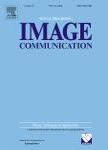版权所有:内蒙古大学图书馆 技术提供:维普资讯• 智图
内蒙古自治区呼和浩特市赛罕区大学西街235号 邮编: 010021

作者机构:Natl Tech Univ Athens Dept Elect & Comp Engn GR-15773 Zografos Greece
出 版 物:《SIGNAL PROCESSING-IMAGE COMMUNICATION》 (信号处理:图像通信)
年 卷 期:2006年第21卷第4期
页 面:334-357页
核心收录:
主 题:relevance feedback content-based retrieval optimization
摘 要:Multimedia content modeling, i.e., identification of semantically meaningful entities, is an arduous task mainly due to the fact that (a) humans perceive the content using high-level concepts and (b) the subjectivity of human perception, which often interprets the same content in a different way at different times. For this reason, an efficient content management system has to be adapted to current user s information needs and preferences through an on-line learning strategy based on users interaction. One adaptive learning strategy is relevance feedback, originally developed in traditional text-based information retrieval systems. In this way, the user interacts with the system to provide information about the relevance of the content, which is then fed back to the system to update its performance. In this paper, we evaluate and investigate three main types of relevance feedback algorithms;the Euclidean, the query point movements and the correlation-based approaches. In the first case, we examine heuristic and optimal techniques which are based either on the weighted or the generalized Euclidean distance. In the second case, we survey single and multipoint query movement schemes. As far as the third type is concerned, two different ways for parametrizing the normalized cross-correlation similarity metric are proposed. The first scales only the elements of the query feature vector and called query-scaling strategy, while the second scales both the query and the selected samples (query-sample scaling strategy). All the examined algorithms are evaluated using both subjective and objective criteria. Subjective evaluation is performed by depicting the best retrieved images as response of the system to a user s query. Instead, objective evaluation is obtained using standard criteria, such as the precision-recall curve and the average normalized modified retrieval rank (ANMRR). Furthermore, a newly objective criterion, called average normalized similarity metric distance